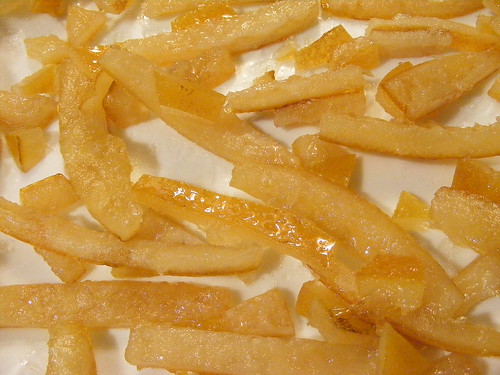Some thoughts on a difficult problem…
I have been reading about the various ideas for converting Norris Hall into a memorial, or razing the building, and various other ideas. I feel similar sentiments and feel that the victims and the heroes deserve some sort of memorial.
BUT… What concerns me is that the more we make of this, the more attractive it becomes for a mentally disturbed individual like Cho to execute a horrible act like this, knowing that he will make a permanent mark on thousands of people’s lives, memorials will be built, and so forth. In memorializing the victims we are also memorializing the perpetrator(s). This is unavoidable.
In a free society under rule of law and with a free press that makes money from sensational stories, it seems nearly impossible to minimize the notoriety that a person like Cho feels they will achieve. A similar situation is found when it comes to terrorists. Combating terrorism directly is nearly impossible, but there is a way to stop terrorism: By definition, a terrorist seeks to terrorize and cause fear in the population. He achieves this through the notoriety of his acts. If terrorist acts were kept as quiet as possible, and terrorists themselves were apprehended and “disappeared”, Latin-American style, without the slightest news or the tiniest footnote in the newspaper, terrorism would cease. If you take away the one purpose that a terrorist hopes to achieve, he will stop. If nobody knows of his actions there’s no point to terrorism.
To support my point, I’ll cite a striking example of one arena where this “silence tactic” was applied, and that is by the Israelis with respect to airline hijacking. Those of you who are old enough will remember that during the late 60’s and early 70’s, hijacking of Israeli airliners by Arab terrorists was very common. It seemed like there was one every week. These hijackings would involve extensive negotiations, lots of news coverage, hostage exchanges, timed exchanges, exchanges for money, fuel, and safe passage, etc., etc., and they would go on for days, with food being brought to the plane as it sat on the tarmac for several days with 100 hostages onboard. These weekly hijackings came to an abrupt halt in the late 70’s when Israel introduced and implemented a new plan. When an Israeli plane is hijacked, there is no news coverage until it’s over, and it is over very quickly. Wherever the plane lands, it is immediately stormed by ruthless, heavily armed and armored troops who enter the plane and simply shoot anything that moves. They try not to hit innocents but sometimes they do. They simply move quickly and wordlessly through the plane, Uzis blazing, until every terrorist is triple-dead. The only thing that is reported in the newspaper is that a hijacking occurred and 8 nameless terrorists are dead. That’s it. Those hijackings stopped cold because the Israelis removed the purpose, which is notoriety and news coverage, airing of demands, etc. A hijacker now gets none of that. Hijacking an Israeli plane means an anonymous suicide and nothing more so there’s no point in it for the would be hijacker. The Germans also had problems with hijackings, although less severe than Israel. The Germans also adopted the Israeli tactic and bingo, no more hijackings.
I brought up the hijacking example to illustrate what happens when you remove the one thing a terrorist wants to achieve. A terrorist-act-minded individual, like Cho, is aware of the “impact” he will make and the lasting memorials that will remain. He knows that he will become instantly famous, and his thoughts and writings will be read by millions, and that’s what happened. In a year or so there might be some new laws passed that will be named “Cho laws”. In ten years they’ll probably make a movie. The name “Cho” will be famous for decades. Unfortunately, and he will be far more famous than any of his victims.
How to change this situation is not clear. It might be impossible in a free society. But it would be good to bear in mind when we make much of events like what happened at Virginia Tech. In a country of 300 million people, there are surely more sick individuals in the population right now that envy Cho and wish they could achieve something similar. The more we make of it, the more attractive it becomes to those who would imitate. A hundred years ago such things happened far less often because news coverage was poor and slow. Notoriety was not guaranteed like it is today.
I wonder how many people consider this aspect that I have just brought up, of events like the Virginia Tech massacre. I wonder if it is even brought up in discussions about what to do with Norris Hall. Norris Hall is just a building, an inanimate object. I think it should be restored to it’s previous condition as quickly as possible and put back into service as before. It should not be turned into an icon because in the end, it memorializes the perpetrator more than any of the victims.
shuttersparks


Recent Comments